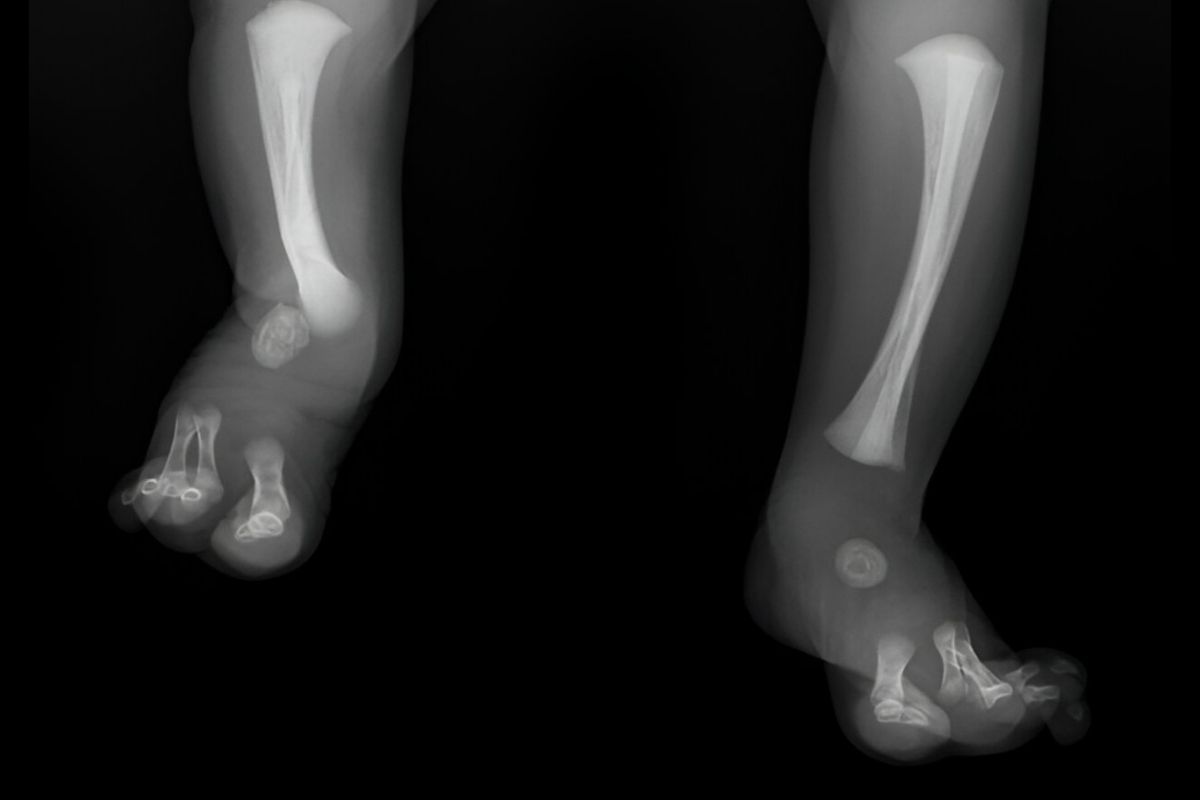
Hecht–Scott Syndrome, also known as Focal Dermal Hypoplasia, is a rare genetic disorder that affects the skin, skeleton, eyes, and face. This condition is caused by mutations in the PORCN gene, which plays a crucial role in embryonic development. Symptoms can vary widely but often include skin abnormalities like streaks or patches, skeletal malformations, and eye issues such as colobomas. Diagnosing Hecht–Scott Syndrome typically involves genetic testing and clinical evaluations. Treatment focuses on managing symptoms and may include surgeries, physical therapy, and specialized eye care. Understanding this syndrome is essential for those affected and their families, as it helps in seeking appropriate medical care and support.
Key Takeaways:
- Hecht–Scott Syndrome is a rare genetic disorder causing stiffness and limited movement in muscles and joints. Early intervention, support groups, and regular follow-ups are crucial for managing and supporting those affected.
- Understanding the genetic basis of Hecht–Scott Syndrome can provide insight into its causes and inheritance patterns. Ongoing research aims to develop new treatments, such as gene therapy and stem cell research, to improve symptoms.
What is Hecht–Scott Syndrome?
Hecht–Scott Syndrome, also known as Distal Arthrogryposis Type 2B, is a rare genetic disorder. It primarily affects the muscles and joints, causing stiffness and limited movement. Understanding this condition can help in managing and supporting those affected.
- Hecht–Scott Syndrome is a genetic disorder, meaning it is inherited from one's parents.
- It falls under the category of arthrogryposis, which refers to conditions involving joint contractures.
- The syndrome is named after Frederick Hecht and Charles Scott, the doctors who first described it.
- Distal Arthrogryposis Type 2B is another name for this syndrome, highlighting its specific type within the arthrogryposis family.
Symptoms of Hecht–Scott Syndrome
The symptoms of Hecht–Scott Syndrome can vary in severity but generally involve the muscles and joints. Here are some key symptoms to look out for.
- Joint contractures are a hallmark of the syndrome, causing joints to become stiff and immobile.
- Clubfoot, a condition where the foot is twisted out of shape or position, is common.
- Camptodactyly, or permanently bent fingers, often affects those with this syndrome.
- Scoliosis, a sideways curvature of the spine, may develop in some individuals.
- Facial abnormalities, such as a small jaw or cleft palate, can also be present.
Causes and Genetics
Understanding the genetic basis of Hecht–Scott Syndrome can provide insight into its causes and inheritance patterns.
- The syndrome is caused by mutations in specific genes, such as TNNI2, TNNT3, and TPM2.
- It follows an autosomal dominant inheritance pattern, meaning only one copy of the mutated gene is needed to cause the disorder.
- Spontaneous mutations can occur, leading to cases where there is no family history of the syndrome.
- Genetic testing can help confirm a diagnosis and identify the specific mutation involved.
Diagnosis and Treatment
Diagnosing Hecht–Scott Syndrome involves a combination of clinical evaluation and genetic testing. Treatment focuses on managing symptoms and improving quality of life.
- Physical examination by a specialist can identify characteristic signs of the syndrome.
- Genetic testing can confirm the diagnosis by identifying mutations in the relevant genes.
- Physical therapy is crucial for maintaining joint mobility and muscle strength.
- Orthopedic surgery may be necessary to correct severe joint deformities.
- Occupational therapy can help individuals develop skills for daily living.
- Speech therapy might be needed if facial abnormalities affect speech.
Living with Hecht–Scott Syndrome
Living with Hecht–Scott Syndrome requires ongoing management and support. Here are some aspects to consider for those affected and their families.
- Early intervention can significantly improve outcomes for children with the syndrome.
- Support groups provide emotional support and practical advice for families.
- Educational accommodations may be necessary to support learning and development.
- Regular follow-ups with healthcare providers ensure that any complications are promptly addressed.
- Adaptive devices, such as braces or wheelchairs, can aid mobility and independence.
- Nutritional support might be needed if feeding difficulties are present.
Research and Future Directions
Ongoing research aims to better understand Hecht–Scott Syndrome and develop new treatments. Here are some areas of focus.
- Gene therapy holds promise for correcting the underlying genetic mutations.
- Stem cell research could lead to new ways to repair damaged tissues.
- Clinical trials are testing new medications and therapies to improve symptoms.
- Patient registries help researchers gather data and track the progress of those with the syndrome.
- Awareness campaigns aim to educate the public and healthcare professionals about the condition.
Final Thoughts on Hecht–Scott Syndrome
Hecht–Scott Syndrome, a rare genetic disorder, affects connective tissues, leading to joint contractures and skin abnormalities. Understanding its symptoms, causes, and treatments can help manage the condition better. Early diagnosis and intervention play a crucial role in improving the quality of life for those affected. Genetic counseling is essential for families with a history of the syndrome, aiding in informed decision-making. While there's no cure, physical therapy and supportive care can alleviate symptoms. Ongoing research offers hope for future advancements in treatment. Awareness and education about Hecht–Scott Syndrome are vital for early detection and support. By staying informed and proactive, individuals and families can navigate the challenges posed by this rare condition. Remember, knowledge is power when dealing with any health issue. Stay curious, stay informed, and support those affected by Hecht–Scott Syndrome.
Frequently Asked Questions
Was this page helpful?
Our commitment to delivering trustworthy and engaging content is at the heart of what we do. Each fact on our site is contributed by real users like you, bringing a wealth of diverse insights and information. To ensure the highest standards of accuracy and reliability, our dedicated editors meticulously review each submission. This process guarantees that the facts we share are not only fascinating but also credible. Trust in our commitment to quality and authenticity as you explore and learn with us.
